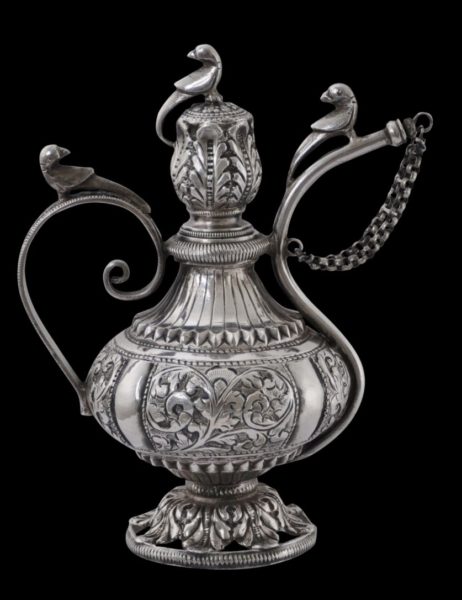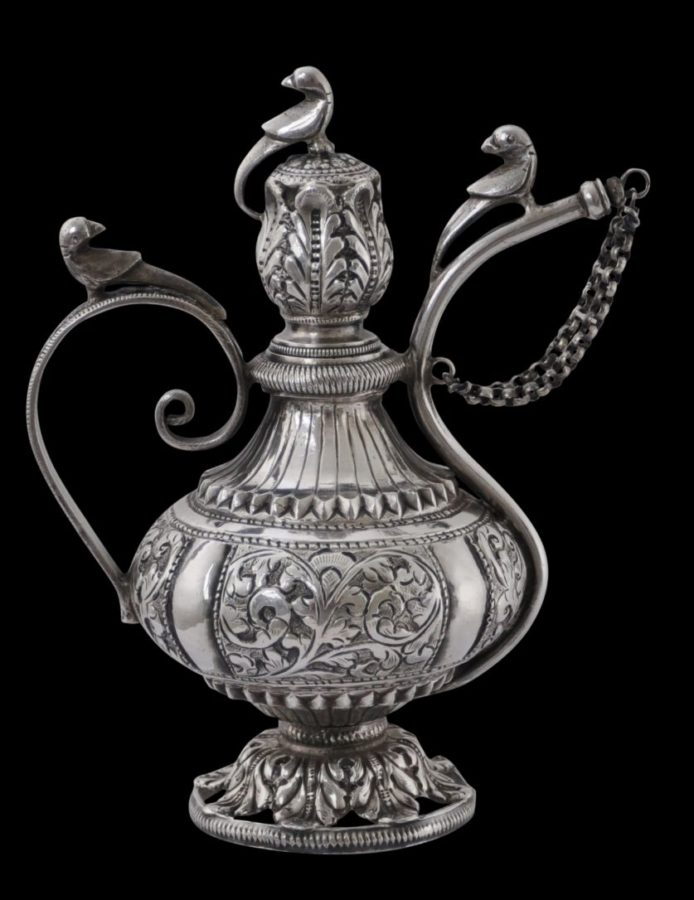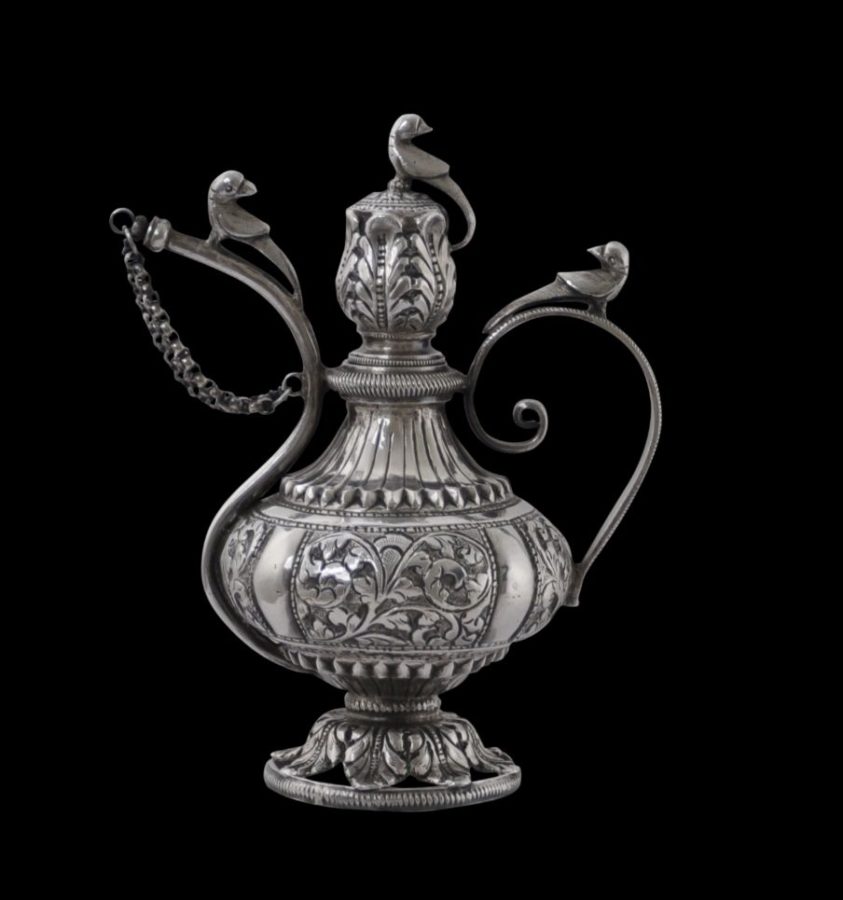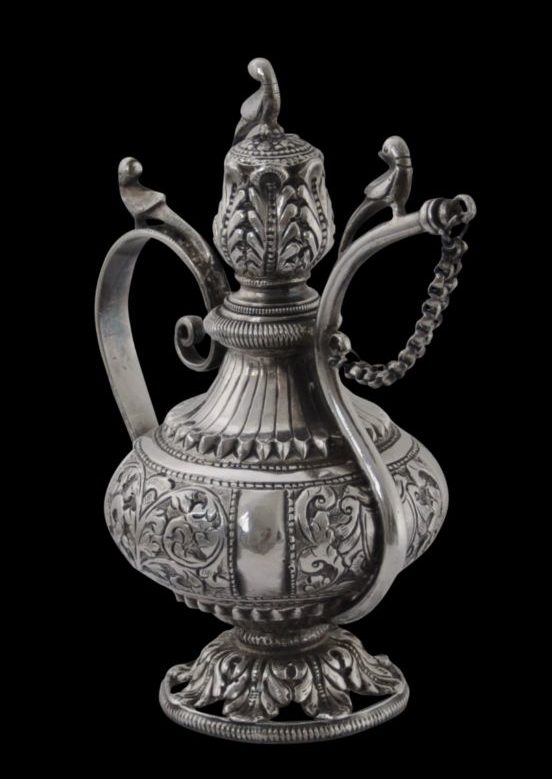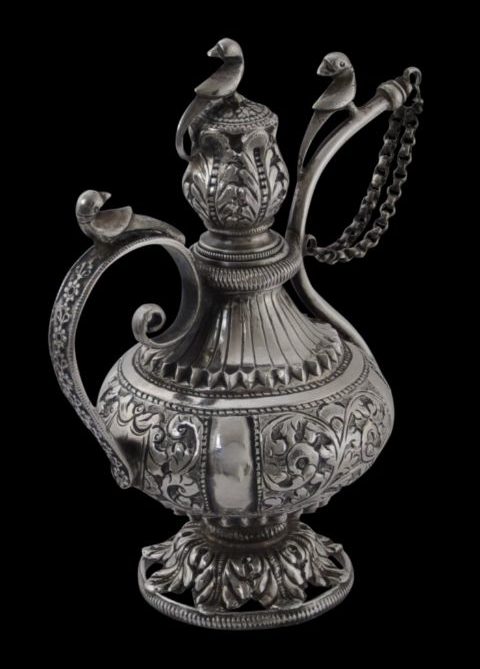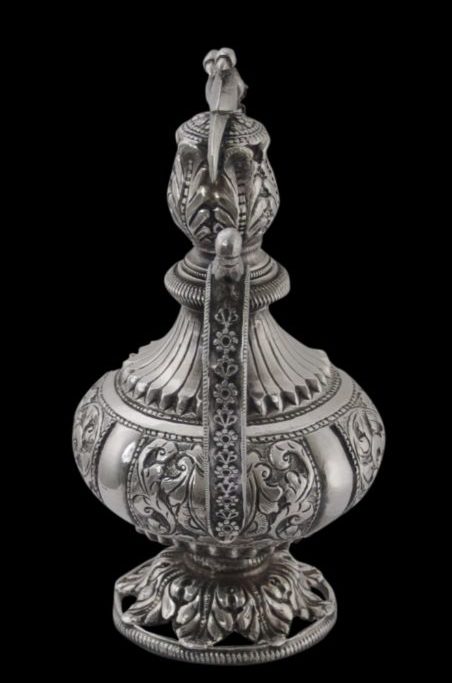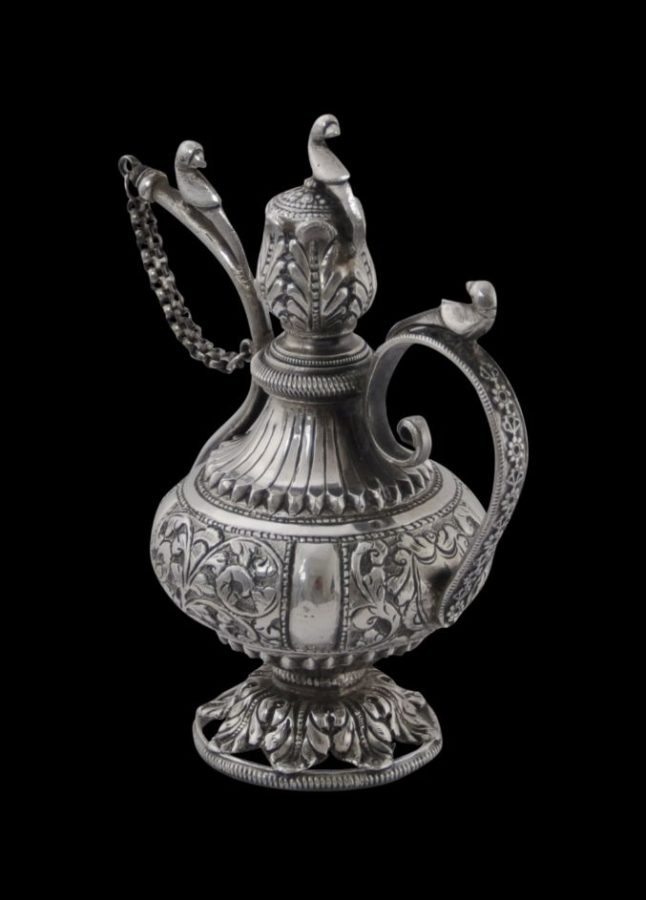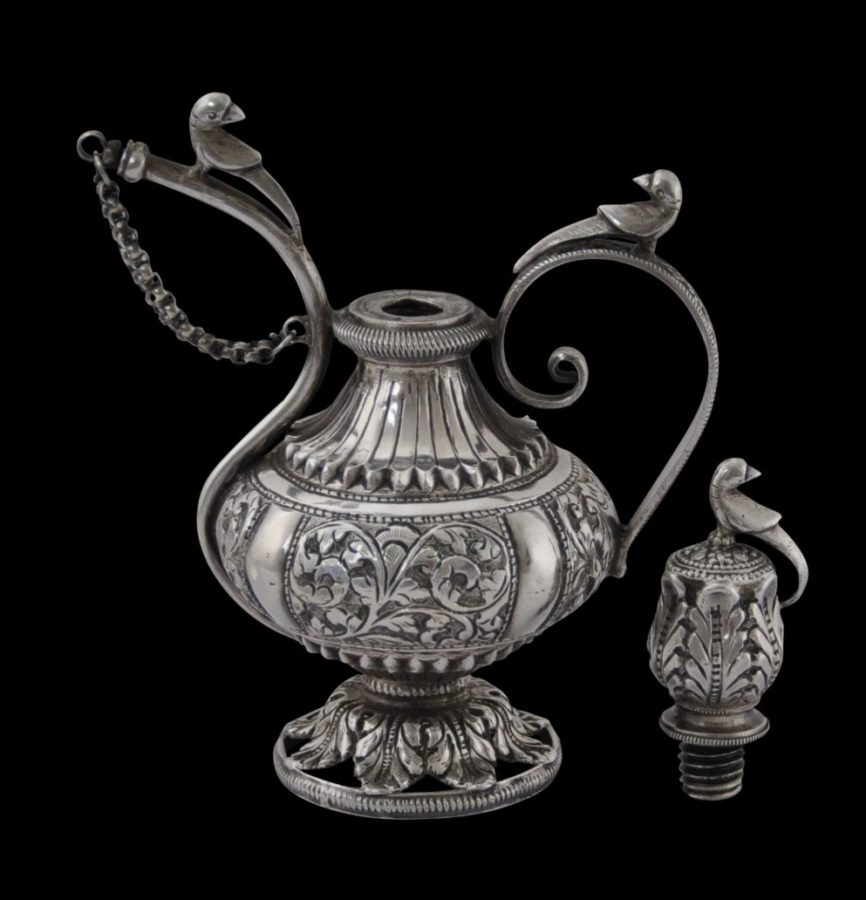This is fine Mughal chuski or opium water ewer is of cast, chased and chiselled solid silver.
Such ewers were used by the Mughals (who were Muslims) and the Rajputs (who were mostly Hindu) of north-western India to serve wine (araq) and opium water (kusumbho) to guests. It dates to the 19th century and is typically 18th century in style.
It sits on a flared, domed, pierced foot elegantly decorated with tapering acanthus leaves. The stem leads to a superbly cast and gilded cast rosette of ribbed lotus petals on which the flattened spherical body sits.
The body is decorated with four plain gadroons that separate four panels chased with leafy scrollwork.
The body is surmounted by another lotus rosette, and a baluster-form neck into which a tapering, barrel-form stopper screws. This is chased with more acanthus leaf motifs.
The spout is thin and ‘S’ shaped. It wraps down, around the body, and at the pouring end, terminates with a fine, bud-like aperture with a small stopper that links to the spout with a double silver chain.
On the other side is a chased silver curling handle.
The stopper, spout and handle are each topped by a long-tailed, solid cast silver parrot.
It sits solidly and evenly and is in excellent condition. Overall, it is an elegant, and well proportioned item.
Several related chuskis are illustrated in Terlinden (1987, p. 119-20).
Opium usage was common in northern India. Often it was dissolved in water and taken as a beverage. It was a part of normal social interaction and for some, an addiction. The Bodleian Library at Oxford, United Kingdom, has in its extensive collection of Mughal miniature paintings one of the dying ‘Inayat Khan, dated 1618. The painting shows the courtier to the Mughal emperor Jahangir, laying on a bed and propped against cushions. His body is wasted and shrivelled, his face sullen and his eyes blank: the courtier is about to die, a result of opium and alcohol addiction. The Emperor was so appalled and fascinated by ‘Inayat Khan’s extreme condition that he mentions it in his memoirs.
References
Terlinden, C., Mughal Silver Magnificence, Antalga, 1987.
Topsfield, A., Indian Paintings from Oxford Collections, University of Oxford, 1994.


